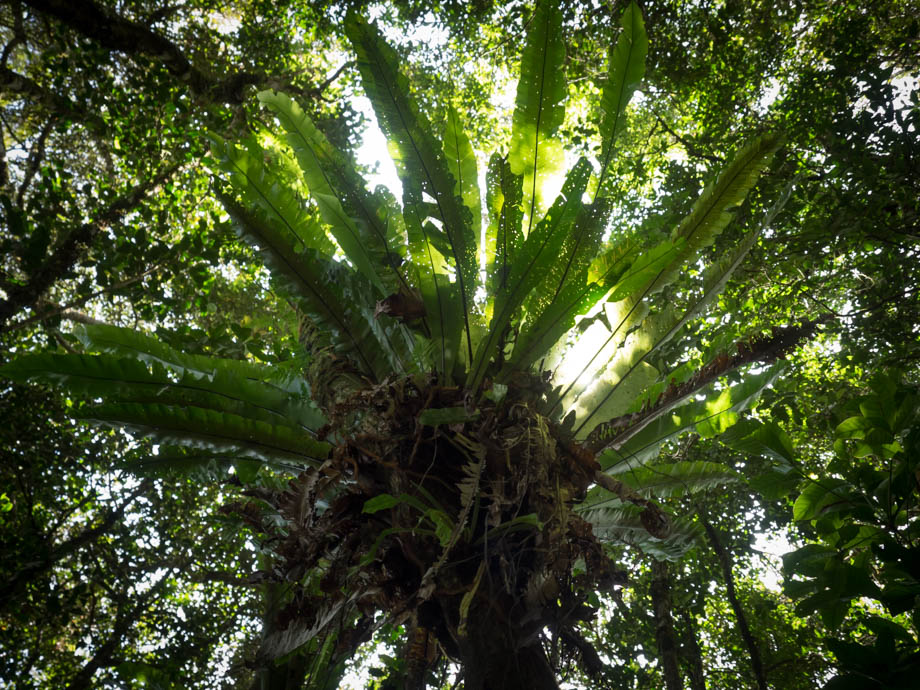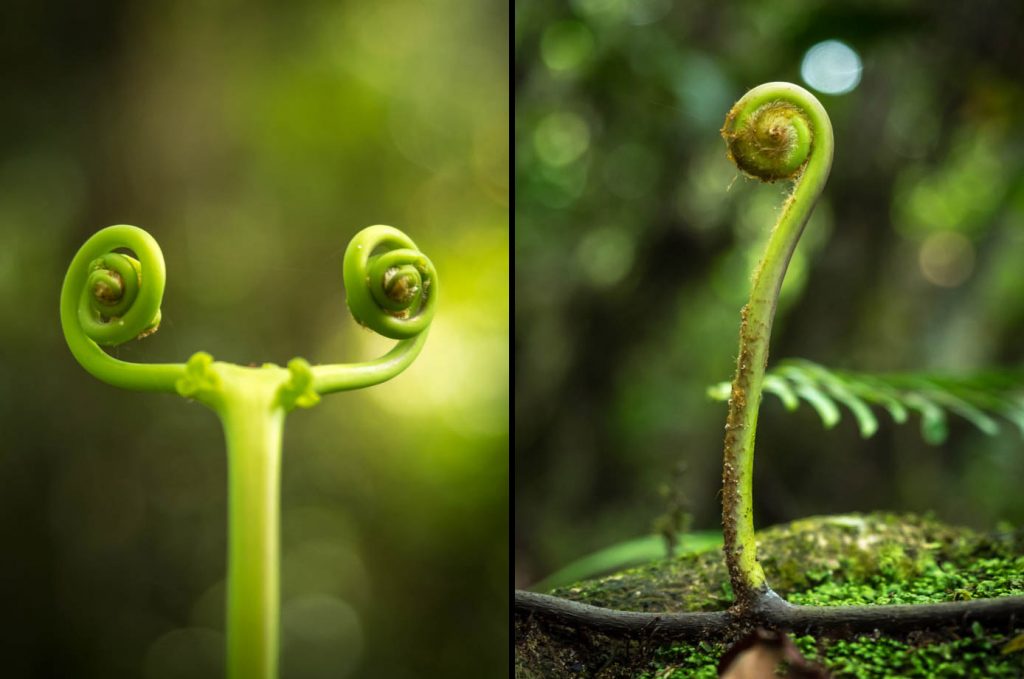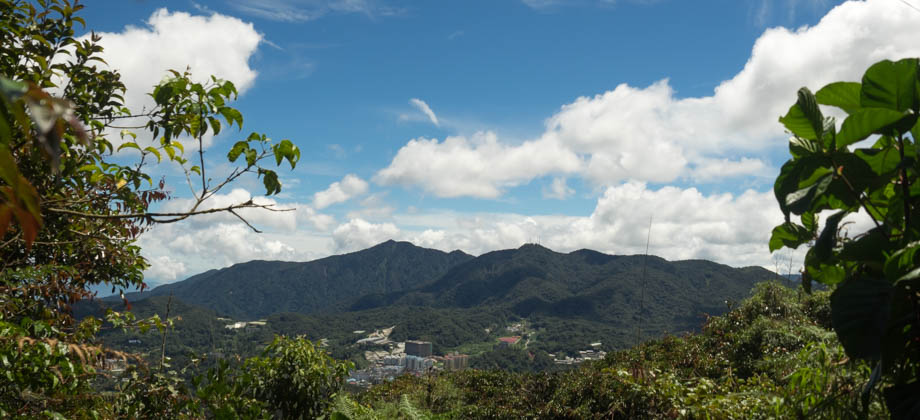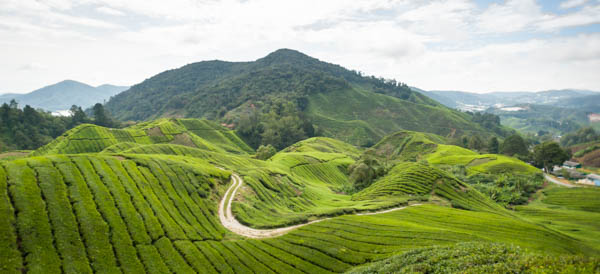Mount Berembun
Epic Epiphytes
The high elevations and relatively low temperatures of Cameron Highlands brings about a persistent fog that surrounds the rainforest, reducing the sunlight that reaches the canopy which in turn drops the rates of evapotranspiration. Because of this, the water retention in these 'cloud forests' is very high as the fog ends up condensing on the leaves, which then drips down to the ground. Epiphytes abound in conditions like this. They grow on other organisms such as on the trunks of trees, but unlike parasites, they obtain their nutrients and water from the air instead of through their hosts.
Unfortunately, because cloud forests depend so heavily on the climate, these delicate ecosystems are strongly affected by climate change. The 'heating up' and 'drying out' of these temperate zones will inevitably lead to the death of epiphytes, and an overall decline in the biodiversity of these areas.

As you walk along the path, you may occasionally see stalks protruding from the moss that look almost like bean sprouts. These are the stalks of mature sporophytes and they support something called a 'sporangium' that both produces and stores spores for reproduction. The release of these spores then gives rise to new gametophyte plants. The gametophytes produce male and female gametes that then go on to form the zygote, which in turn becomes a newly emerging sporophyte.
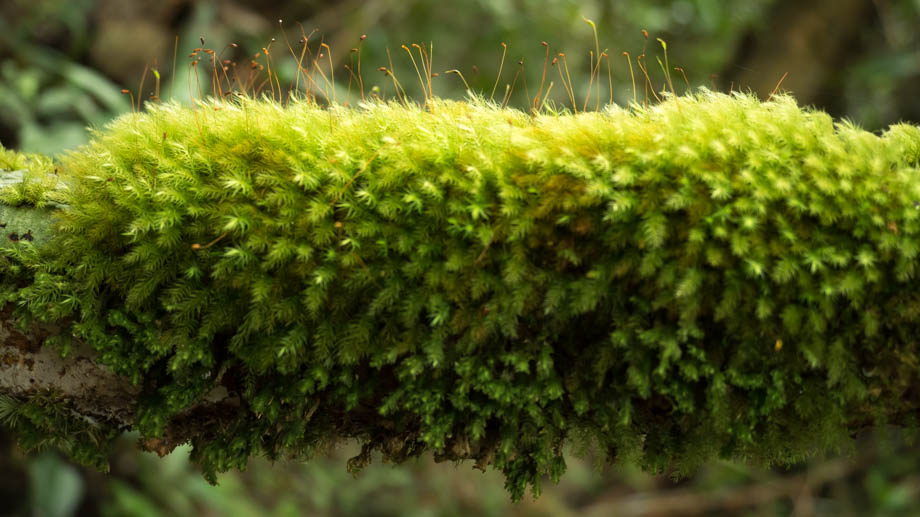
Other plants such as ferns also produce sporangia but they are instead located in 'nodules' that are arranged in lines along the leaf edges, something that veteran hikers are probably quite familiar with. The immature sporangia has the appearance of bumps or green 'bubbles', whereas the colour tends to change to orange-brown once mature. Spikemoss (Selaginella spp.) on the other hand, are neither moss nor fern. Instead of producing stalks or nodes, these plants produces something called a 'strobilus' which is a hardened tip at the end of their leaves that functions similarly to spores.
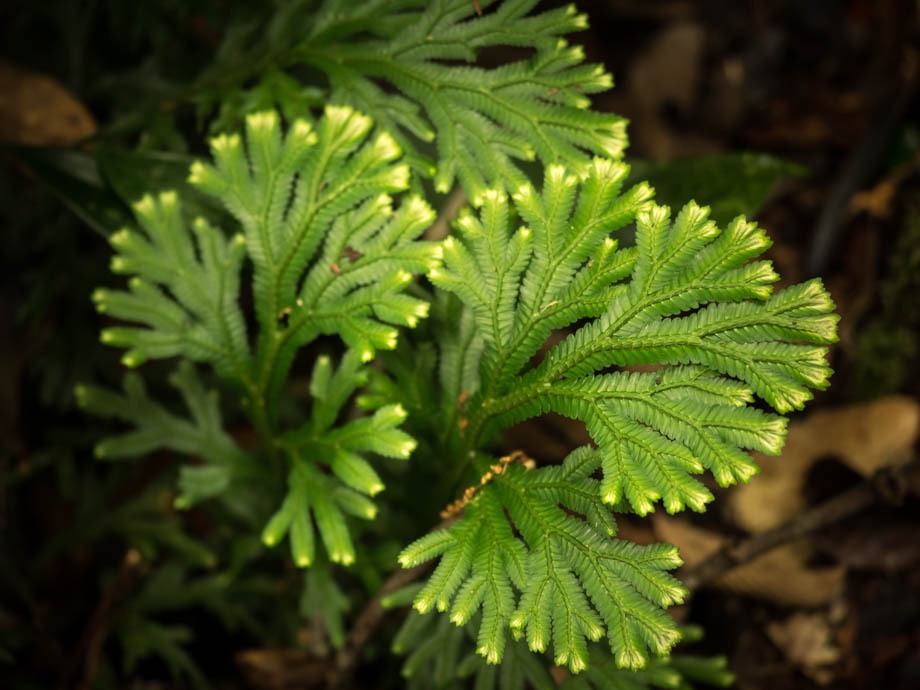
One of the larger epiphytic ferns that you are likely to encounter is the birds nest fern (Asplenium nidus), which is called 'Paku langsuir' in the Malay language. This plant can be either epiphytal and way up in the canopy attached to the trunk of a tree, or terrestrial and way down below. The plant collects water and humus in its leaf-rosette and has fronds that have lengths that seem to be directly proportionate to humidity levels!
